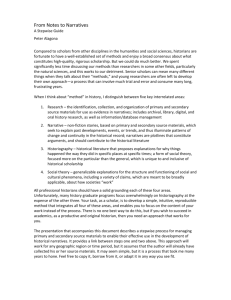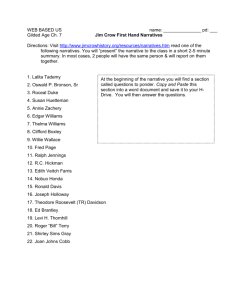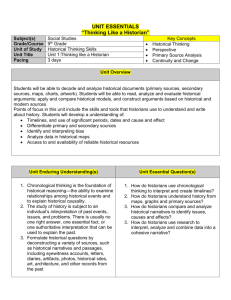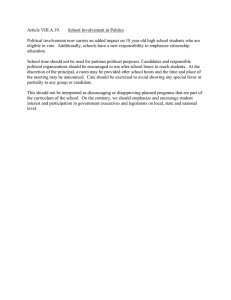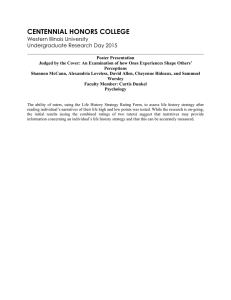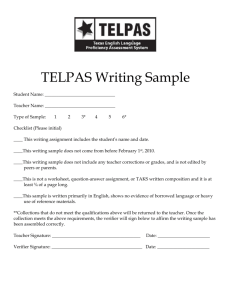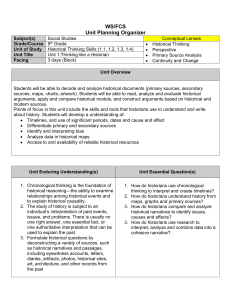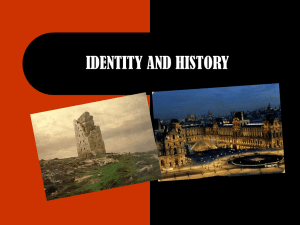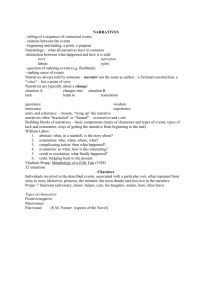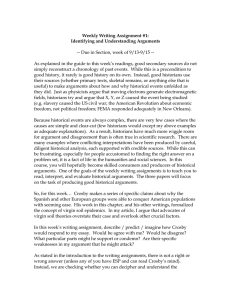Learning Outcomes
advertisement
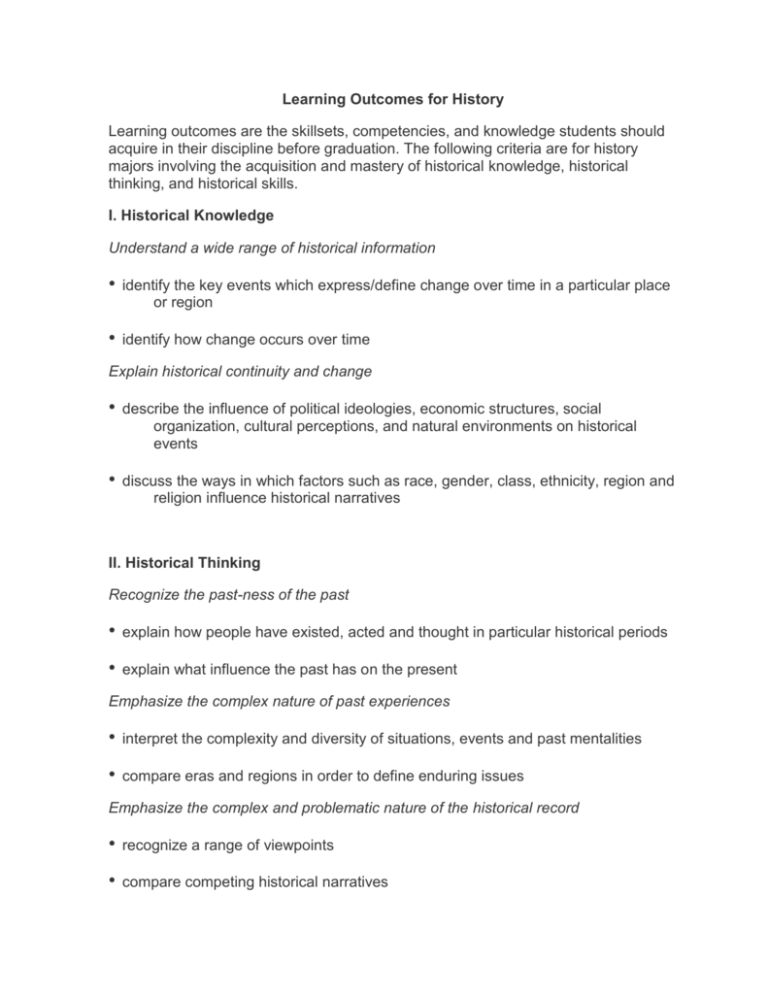
Learning Outcomes for History Learning outcomes are the skillsets, competencies, and knowledge students should acquire in their discipline before graduation. The following criteria are for history majors involving the acquisition and mastery of historical knowledge, historical thinking, and historical skills. I. Historical Knowledge Understand a wide range of historical information • identify the key events which express/define change over time in a particular place or region • identify how change occurs over time Explain historical continuity and change • describe the influence of political ideologies, economic structures, social organization, cultural perceptions, and natural environments on historical events • discuss the ways in which factors such as race, gender, class, ethnicity, region and religion influence historical narratives II. Historical Thinking Recognize the past-ness of the past • explain how people have existed, acted and thought in particular historical periods • explain what influence the past has on the present Emphasize the complex nature of past experiences • interpret the complexity and diversity of situations, events and past mentalities • compare eras and regions in order to define enduring issues Emphasize the complex and problematic nature of the historical record • recognize a range of viewpoints • compare competing historical narratives • challenge arguments of historical inevitability • analyze cause and effect relationships and multiple causation III. Historical Skills Develop skills in critical thinking and reading • evaluate debates among historians • differentiate between historical facts and historical interpretations • assess the credibility of primary and secondary sources Develop research skills • formulate historical questions • obtain historical data from a variety of sources • identify gaps in available records Develop the ability to construct reasonable historical arguments • write a well organized historical argument • support an interpretation with historical evidence from a variety of primary and secondary sources

